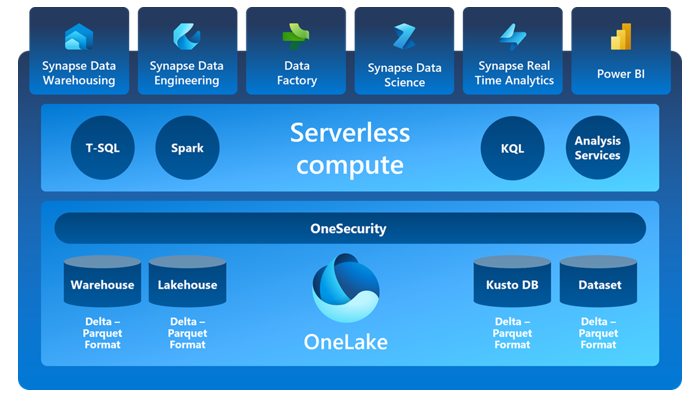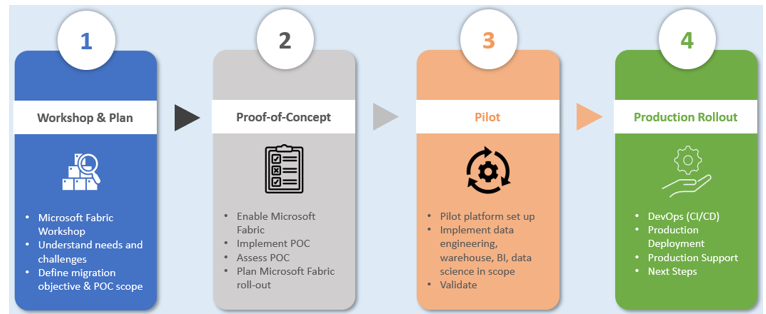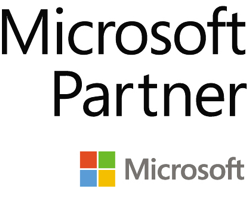
Microsoft Fabric: Expert Guidance for a Successful Evaluation
In 2023 Microsoft announced major updates to its Azure data platform. While their OpenAI service has been dominating the headlines, questions about Microsoft’s new, comprehensive analytics solution Fabric have been just as central in our customer discussions.
Adoption of a new data analytics platform is no easy feat, with concerns around skilling, tool integration, obsolescence, security and so forth. The concerns and path forward will vary depending on the organization’s circumstances - from those having a legacy SQL Server implementation on-premises to those having an advanced, cloud-native analytics deployment, and everywhere in between. That said, these four high-level questions should be in mind for any organization evaluating the Fabric potential:
- Should we consider exploring Microsoft Fabric given our existing data platform maturity and investment?
- Which Fabric capabilities would be the most suitable and beneficial for my organization?
- How can I preserve my current data platform investment while capitalizing on the advantages offered by Fabric?
- What steps are necessary to establish governance and cost management in this new platform?
Before we continue with our recommendations to address these questions, let’s take a few minutes to level-set on what Fabric is and is not.
The Microsoft Fabric Ecosystem
At its core, Fabric is software-as-a-service (SaaS) integrating three Microsoft products: Azure Data Factory, Power BI and the Synapse data platform for an all-in-one suite designed for performance, scalability and ease of use. Underlying Fabric is the OneLake unified data foundation and Microsoft Purview for persistent data governance.

Source: What is Microsoft Fabric - Microsoft Fabric | Microsoft Learn
More specifically, facets of the platform are:
- Data Engineering: Empowers data engineers to transform and democratize large-scale data through Apache Spark within a lakehouse.
- Data Factory: Equips business and technical users with tools for data integration, offering over 300 transformations (including AI-based) via 200+ native connectors while managing data pipelines.
- Data Science: Integrates with Azure Machine Learning, enabling data scientists to develop and deploy ML models and leverage SynapseML for scalable ML pipelines.
- Data Warehouse: Natively stores data in the open Delta Lake format separate from compute to promote scalability and performance for analytics workloads.
- Real-Time Analytics: Facilitates querying and analysis of observational data, including real-time streams, unstructured/semi-structured data, and IoT data.
- Power BI: An integral component of Fabric, providing data visualization integrated with Microsoft 365 apps and within Power BI.
- Dataflows Gen 2: A new generation of dataflows accelerates authoring with a no-code/low-code experience.
While Fabric is a SaaS offering, it is still a resource installed in an Azure subscription. As such, a landing zone with prerequisite identity, networking, security, and governance must be in place.
While a Fabric analytics solution can be fully composed with Fabric tooling, within the Azure tenant an organization can integrate Fabric with Azure resources that sit outside Fabric, for instance Cosmos DB, Azure AI Services and Azure Monitor.
For more information about Fabric, please see the Resources section at this end of this blog.
Microsoft Fabric Evaluation Criteria
When working with our customers, SNP recommends the high-level success criteria below be evaluated when contemplating Microsoft Fabric as their Data & Analytics platform:
- Seamless Integration: Evaluate how Fabric, with external tools, should be achieve data sharing and workflow orchestration without disruption to your established ecosystem.
-
Improved Efficiency: The true value of any platform lies in its ability to simplify processes. Microsoft Fabric should reduce the time and effort required for data engineering, data science, and analytics tasks. Evaluate how migrating the workloads to Fabric will increase efficiency and productivity across data engineering services and also result in faster time to derive insights in BI apps.
-
Data Democratization Microsoft Fabric empowers business users and data scientists alike, offering self-service access to data and analytics capabilities. Evaluate how this feature can help in extending the utility of data throughout your organization.
-
Scalability: As your organization grows, so do your data needs. Evaluate Microsoft Fabric's ability to scale effectively, accommodating increased workloads without compromising performance.
-
Cost Optimization: Financial considerations are paramount. Evaluate how Fabric can help in cost reduction, optimized resource utilization, and improved cost management capabilities, when compared to your existing data platform architecture.
-
Enhanced Data Governance: Data governance is critical, especially in today's regulatory environment. Evaluate how Fabric facilitates effective enforcement of data governance policies, ensuring data quality, and maintaining compliance standards.
-
Data Security: With data breaches an ever-present threat, success means strengthening data security and privacy, especially for sensitive or regulated data. Evaluate the Security features of Fabric to over the risks and implement tighter security policies.
Conclusion
In this blog, we've explored the evaluation criteria that can guide your organization's adoption of Microsoft Fabric as your Data & Analytics platform. By keeping these criteria in mind, you can maximize the value of this platform alongside your existing investments, leading to more effective decision-making and a competitive edge in your industry.
YOUR NEXT STEPS:
If you like what you’ve read so far, let’s move forward together with confidence. SNP recommends the following approach to start understanding, exploring, and evaluating Microsoft Fabric for your business: We’re here to help at every step. Contact SNP’s Data & AI experts here





